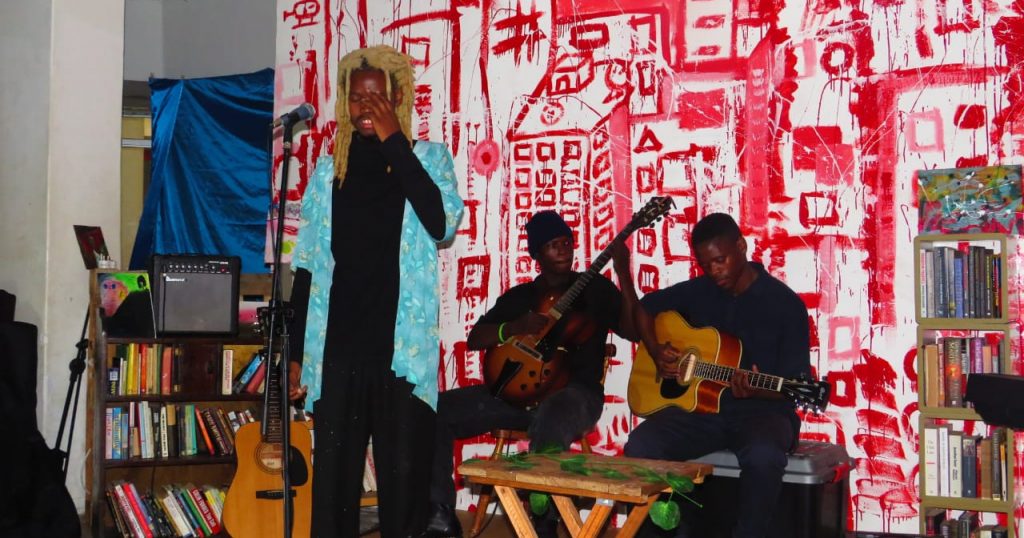Bazaar: A Space To Be

Bazaar Arts and Crafts Market, which took place at the Central Park Mall from 24 March to 3 April 2022, proved to be a worthwhile experiment and just the space the city needs, reports Mpho Matsitle.
Not many things expose the generational gap as does 30 Seconds; it reveals quite pronouncedly the generations’ different frames of reference, despite our claim that we are all young, wild and free. When, reading on a yellow card, with her team trailing some seven places behind, a player gave the clue ‘Song from the Lion King,’ her teammate, much younger, shouted out quite confidently ‘Spirit!’ The iron curtain rose sharply between the generations. For the younger ones, that answer made perfect sense. It is after all sung by the biggest pop star alive, who some might call a deity. The older ones found the answer not only unfathomable, but also unforgivable. Hakuna Matata, they posited, is the only acceptable answer. Both groups were wrong, the card revealed, the song in question was Circle of Life.

They all laughed it off. Their being wrong was the perfect embodiment of John Gawsworth’s faultless blemishes. A poet and poem the writer discovers per chance at the sit-down library right at the entrance of the Bazaar Arts & Crafts Market. Quite a few things seem to happen per chance, or serendipitously if you prefer, at this eleven-day pop-up arts and crafts market. The 30 Seconds game that offers us maragogo for this article, also just happened. The makeup of the two teams is very fluid, anyone who wishes to can join and leave any team at will. This is the modus operandi of the Bazaar. Stationed close to the bus terminus at Bloemfontein’s Central Park mall, it is tucked away in a quiet corner, yet accessible enough without being overwhelmed by the heavy foot traffic of the mall. Some people merely steal a peek at the door and go about their business. Some trot in, tentatively, curiously, and browse the stalls for a few minutes. Others come in befuddled, dragged in by the promoters who pick targets among throngs of shoppers downstairs, who then proceed to give them a VIP tour of the Bazaar — the massage parlour, the tattoo shop, the stalls with a myriad of products, and of course, the artwork. A good number though, have made the Bazaar their home, just lounging about all day. Reading books from the sit-down library, playing boardgames, learning to play music, and general gawking at the artworks on the walls. All who come in, “through despair and hope, through faith and love” eventually find their place “on the path unwinding.”
The Bazaar, though it may sell itself as a market, is really much more than that. “There’s more to see than can ever be seen, more to do than can ever be done. There’s far too much to take in here, more to find than can ever be found.” If you’re looking for its essence, its moremogolo, the only conclusion reachable is that it is a space. At a concrete level, that is what the management of the Central Park mall offered the organisers. An empty shop, with a few basic and reasonable house rules. In turn, the organisers sent out calls for artists and entrepreneurs to come be. Then opened it up to the general public to come make of the space what they will. All calls — to artists, crafters, entrepreneurs and patrons — were for collaboration. The Bazaar did not offer anything but a space. A free space to create, to think. We all went there with our gifts and share them. As Morafe intimated, some of us were given the gift “go e feel-a”. It is Ngugi’s theatre where there is no line between performer and audience. A space wherein there’s no passive consumer; but all are working towards creating beauty. To be beautiful. To be poetry. A space for all of us to be. Over the course of the eleven days, the calls were heeded and a commune developed. With poet Tshiamo Malatji, who was always first to arrive and last to leave, as its reluctant head.

According to the logbook, the Bazaar has had close to a thousand visits. Tshiamo credits a majority of these to the promoters who scouted the young, wild and free and brought them upstairs. A good number of them came back at their own accord, and even brought company. This way, numbers climbed steadily as patrons began defining the space. As an experiment, the ampoer fortnight the space existed should give the organisers and the mall’s management enough data to arrive at the right conclusion: that the space ought to be a permanent fixture.
To celebrate the space, and reward the patrons who gave it meaning, a music and poetry showcase was put on in the early evening of the last day of the market. Simply titled ‘Tshi & Friends’, with Tshiamo Malatji hosting and performing, joined by his talented friends on stage, and his other differently-talented friends forming a circle not around, but with the stage.
FEATURED IMAGE: B.O.M, a friend of Tshi, performing at the Bazaar.